
Dawn swarming
Swarming is a set of behavioural displays of tree-dwelling bats before they enter the roost.
We introduced an agent-based model to predict fission-fusion population dynamics. Simulations revealed that social bonds between bats, maintained by frequent switching among groups, play an important role in this highly dynamic system. When strong social contact was not considered, reducing the original number of trees with cavities to 50% was still acceptable to bats, but further interventions and/or increased demand for social contact would have led to local extinction of the species.
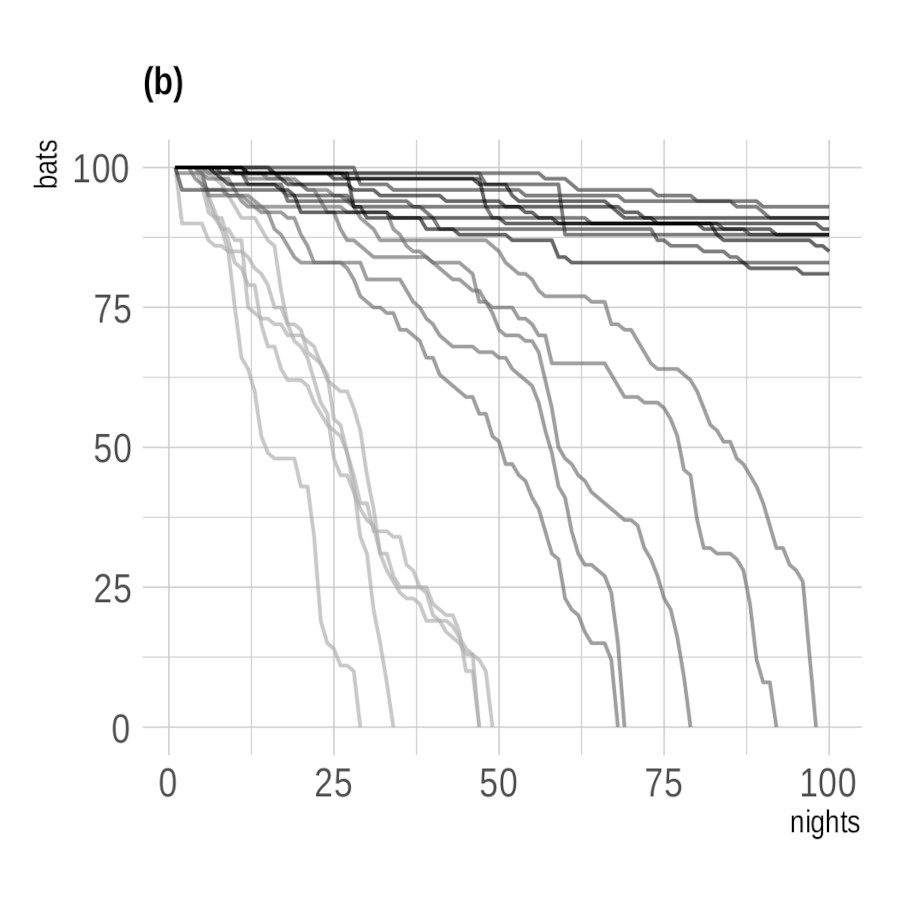
Using PIT-tags we recorded swarming activity of members of a Daubenton’s bat maternity colony in the vicinity of their roosts. We found a gradual increase of swarming activity from midnight to sunrise in old adult females, whereas young females and juveniles primarily swarmed later at dawn. Older bats likely take a more active role in signalling the position of the roost. Old males exhibited the least swarming activity at maternity roosts, presumably due to their solitary lives.
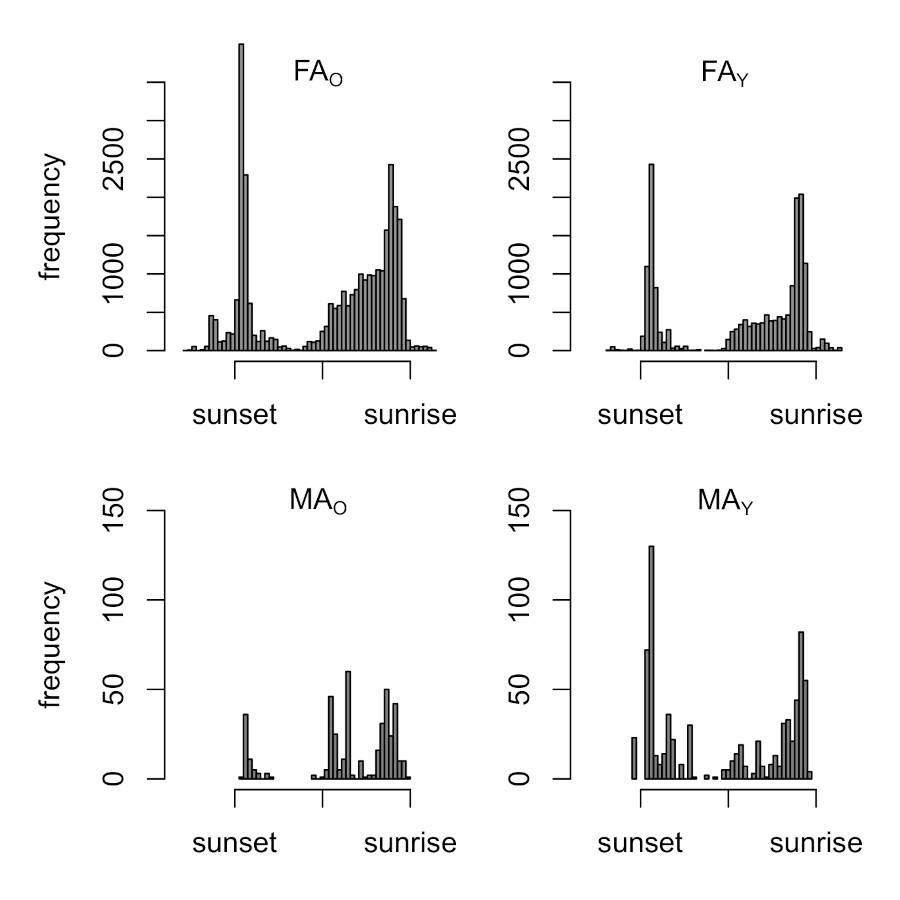
In a simulated environment of the agent-based SkyBat model, we replicated natural fission–fusion dynamics of the Leisler’s bat groups according to predefined species and habitat parameters. Spatiotemporal patterns of swarming activity of agents were similar to bats. The number of simulated groups formed prior to sunrise, the mean number of individuals in groups and the roost height did not differ significantly from data on a local population of bats collected in the field.

The algorithm is designed to search through unknown environment and look for objects of interest. Individual robotic swarm agents are equipped with memory to make a more efficient search of the space. The proposed algorithm has been evaluated in comparison with a uniform search. Changing a parameter “shout” changes the behaviour mode of the algorithm.
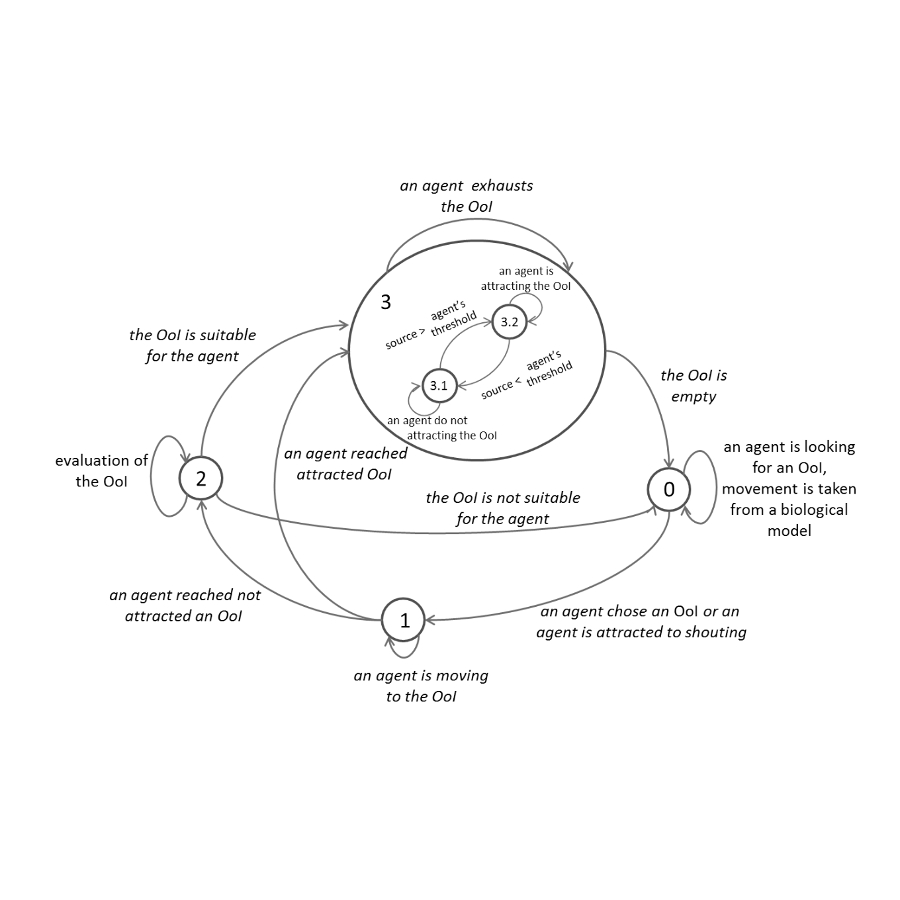
An agent based model - SkyBat, based on long-term observation of bats behaviour under fission-fusion dynamics, is presented in this paper. The agents cooperate while searching for specific targets of interest in an unknown area. Although the agents are autonomous, they have an ability to move from one location to another without a group leader and to react to changes in environment.
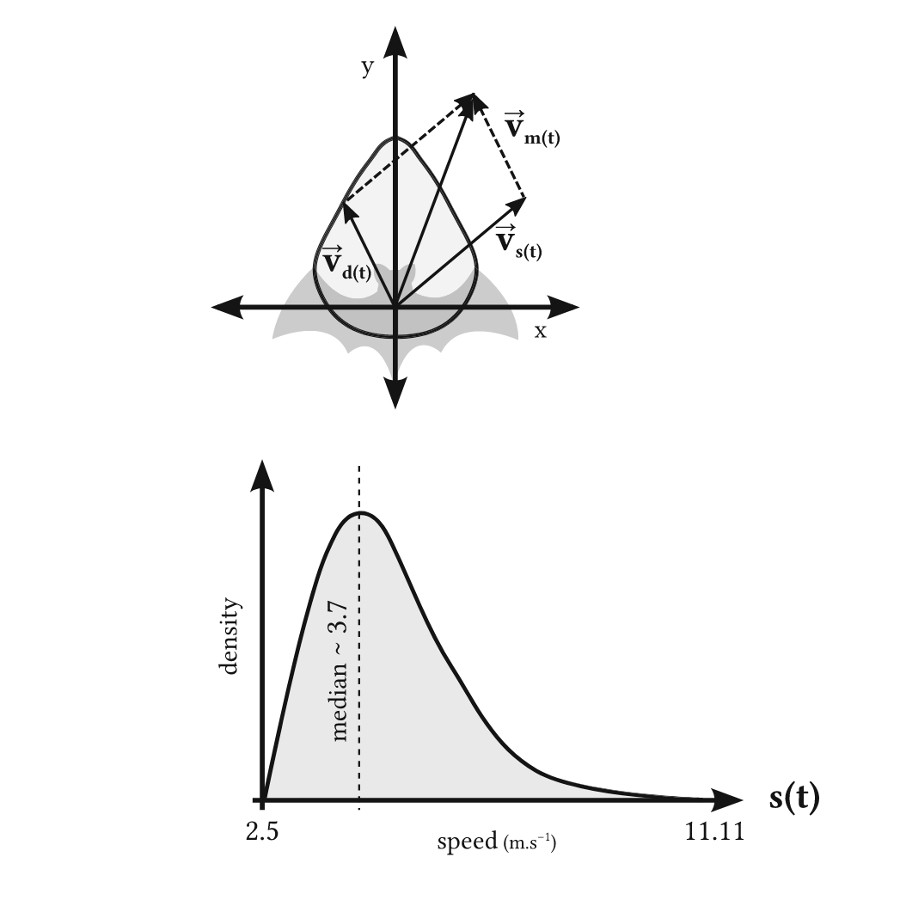
Exploring the activity at the front of the tree hollows, recorded by automatic infrared monitors, we found that the swarming activity of Leisler’s bats was performed during the whole night and was concentrated before the civil twilight at occupied roosts. As bats swarmed the whole night also at sites that were less occupied or even unoccupied, we suggest that members of a bat colony selected new roost from a potentially larger set of available roosting sites. Thus, we propose a possible signalling role of swarming as a threshold behaviour that ensures group cohesion during roost switching.
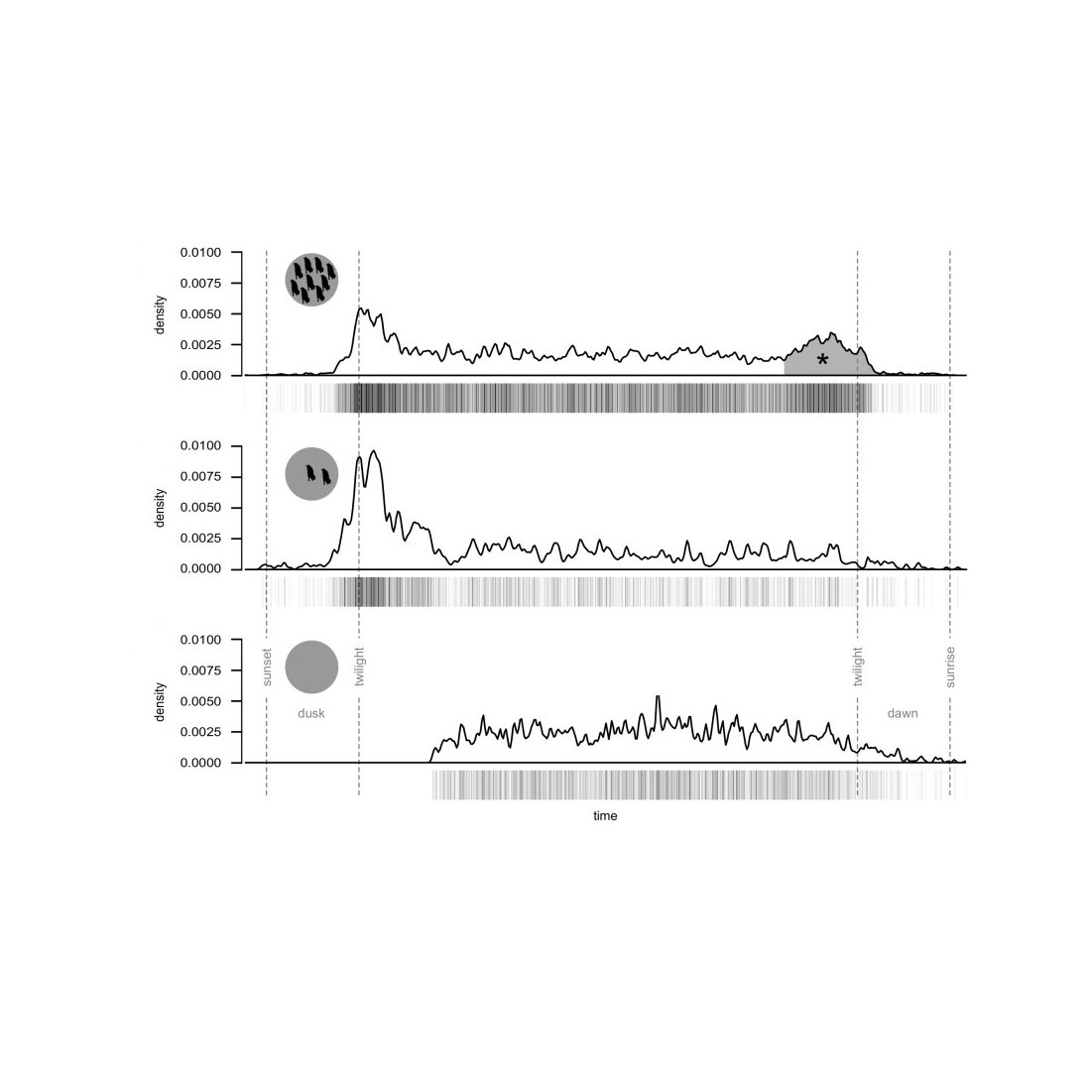
Dawn swarming is a set of behavioural displays observed in bats before they enter the roost. Using field-based video-recordings of swarming sessions made on maternity colonies of Leisler's bat, we constructed ethograms which revealed remarkably similar behavioural sequences among individuals. We suggest that individuals are swarming in close proximity to the roosting tree with some purpose, most probably serving as a beacon for other group members and thus marking the current location of the roost.
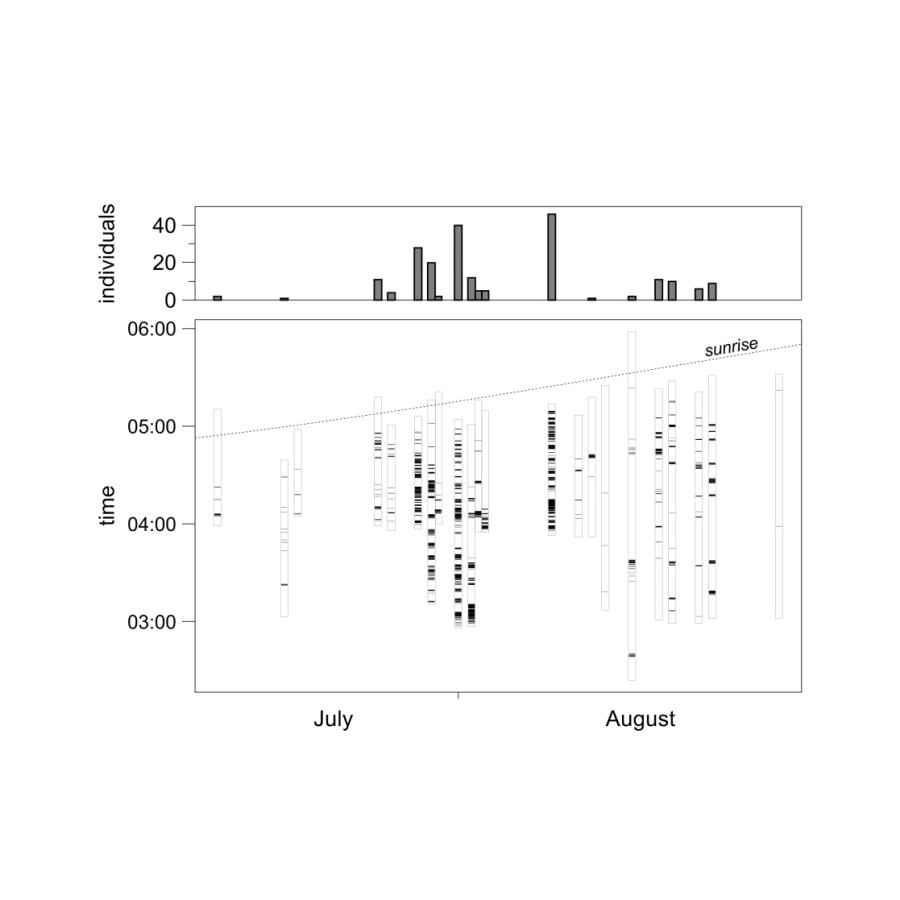
The evening emergence from, and the morning return to, the roosts of noctules were concentrated in the period between sunset and civil twilight, and between civil twilight and sunrise, respectively. Several behavioural displays were recorded during visual observations of dawn swarming.
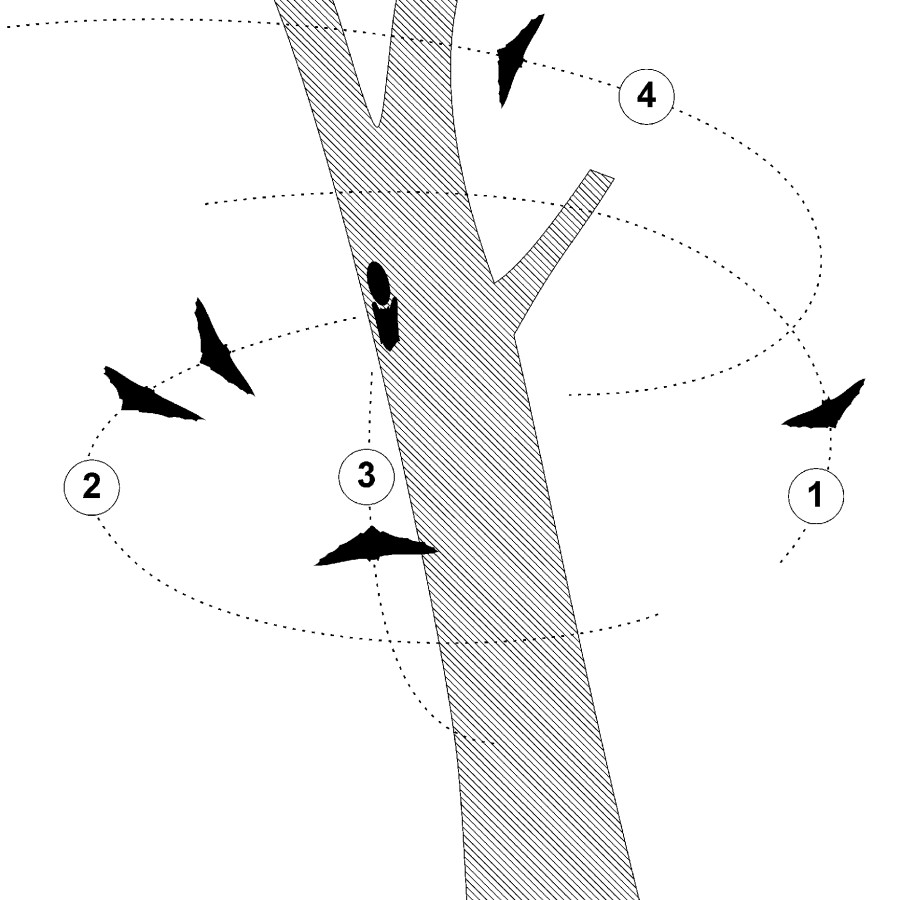
Few photos may help to figure out what we actually do.

Swarming is a set of behavioural displays of tree-dwelling bats before they enter the roost.

The most of previous research on swarming was done on this aerial hawking and migratory bat.

Tree-dwelling bats are tracked in an old parkland established in a hardwood floodplain forest.

Our current study species. A colony roosting in tree cavity during day.

Besides catching and tagging of bats, we have to climb to their roosts.

RFID reader with antenna mounted on tree cavity occupied by bats.

Genetic information reveal kinship and relationships in the population.

Modelling and simulation of bats’ behaviour in the lab of mobile robotics.
Our interdisciplinary research team consists of members which have different scientific basis, methodology and the object of study. However, we bring together new knowledge about mechanisms in biological organisms that should contribute to the field of artificial intelligence, development of new biologically inspired algorithms and methods as well as ultra-light sensors applicable not only in biological research.
Evolutionary and Behavioural Ecology Research Group, Institute of Forest Ecology, Slovak Academy of Sciences
Institute of Informatics, Slovak Academy of Sciences & Department of Applied Informatics, University of SS. Cyril and Methodius in Trnava
Institute of Robotics and Cybernetics, Faculty of Electrical Engineering and Information Technology, Slovak University of Technology in Bratislava